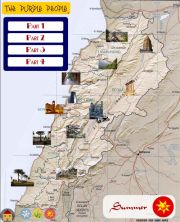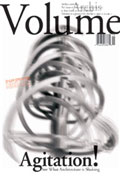|
|
Posted by finkployd in
Info
Sunday, August 13. 2006
A Declaration
� Not a Demonstration �
That Lebanon is Open to Civil Resistance
Beirut.
On Saturday 12 August, the eve of the first month of hostilities, a loose coalition of NGO�s and activists organized a �civilian convoy� from Beirut to the south to Nabatieh in south-central Lebanon.
The event was advertised as a form of �civil resistance� whereby participants would carry aid without prior approval from the Lebanese government or the Israeli Defense Forces.
Beginning at 7 a.m., some 200 journalists and activists � in roughly equal proportions �gathered at Martyr�s Square, downtown Beirut. Most of the activists are Lebanese. They have brought their own vehicles in addition to several Lebanese Red Cross vans. Many place Lebanese flags on the roof or hood of their cars. Ch� is here also, on T-Shirts and buttons. One young man, in addition to his Ch� T-Shirt, is wearing a checkered kuffiyah (Arafat�s signature head-dress) around his neck.
Also milling around in the parking lot is a cocktail of foreign activists come for the war. There are some Code Pink members (a women�s anti-war movement based in the United States) who were meeting with the Iraqi Parliament in Jordan and decided to make a side-trip to Lebanon while in the region. They have approximately one week in Lebanon.
��People to people� diplomacy is especially important at a time like this,� explains Judith LeBlanc, National Co-Chair of �United for Peace and Justice.� Leblanc has traveled with the Code Pink activists. �We are here to meet Lebanese people and gather information we can share with Americans after our return. We hope this will help us all to understand the devastating impact when war is chosen over peace.� LeBlanc will not be traveling with the convoy, but says she supports its brave organizers.
Aisha Bain, who has a master�s degree in International Peace and Conflict Resolution from the School of International Service at American University in Washington D.C., is ticking names off the list of registered convoy participants. In spite of her best efforts, it will take over three and a half hours to line up the roughly 50 cars, number them, and get them out of town.
After several hours of waiting, in a calculatedly anti-climactic flourish, one of the organizers opens a cardboard box around which he has been building an aura of mystery. Forty journalists encircle him like a pack of wolves and snarl and snap at each other trying to get clear video and stills of the event.
The box contains only an assortment of dried and tinned foods. These shots will be become important if the convoy is immolated by Israeli missiles: They are carrying innocuous humanitarian goods, not weapons to re-supply Hizballah.
�The main goal, however, is not to carry aid,� explains Rasha Salti, a spokesperson for the group. �We want to show solidarity with the people of the south and prove that we can travel freely in our country.�
Finally, at approximately 10:30 a.m., �horribly late,� according to Salti, the convoy leaves Martyr�s Square. It moves in fits and starts down the southward highway past the airport. After only 15 kilometres, at the Nayfah military checkpoint � the first on the road south from Beirut � the convoy is stopped.
At the front of the convoy the organizers are engaged in heated argument with one another. Some believe that the Lebanese military know what is best for the safety of the group and they should turn back; others insist that the convoy must continue. There is a sense that much of the purpose of the day has been lost: The convoy protesting Israeli limitations on movement in Lebanon has been halted by the Lebanese military.
At length, the three-person executive committee decides that passengers and drivers should leave their vehicles and carry the supplies by hand through the checkpoint.
The order is given, and with bags of pitas and diapers or cardboard boxes in hand, the crowd approaches the checkpoint. The roughly 15 military men guarding the position form a line across the road as the young people approach, blocking their path. A few activists attempt to walk through the line but are physically pushed back. The two groups principally face one another shouting.
Traffic in both directions is halted by the confrontation and impatient drivers begin honking. Stopped in the line are several southbound trucks carrying boxes � presumably rations � water, and brand-name carbonated beverages.
We climb the carcass of a building next to the checkpoint to observe the crowd. Clearly visible below is an American wearing a red shirt, tan pants (each with many pockets) and a tan sunhat of synthetic material, the kind that are sold in the outfitter shops in big cities. Protruding from his daypack is the blue plastic drinking straw of a Camelbak Hydration System: He has remembered the importance of drinking fluids when exerting one�s self in a hot climate.
The man crosses the line of soldiers who have gathered to stop the activists from passing. He wanders behind their line for a few minutes, then returns, pushing through the soldiers in the opposite direction.
Taking a Lebanese flag, he crosses back and begins waving the red and white tri-colour like a torero, urging the crowd to charge through the line toward him. They ignore him.
I find him, after he has given up this effort, explaining to a Lebanese organizer that there are two options. His preference is to try to walk across the line with the food in hand and then have the vehicles cross later.
�But we cannot cross,� complains the organizer. �You can see that the soldiers will not let us.�
�I walked across and they did not stop me or beat me. Why do you think that is? Let�s stop talking to the soldiers and just do it.� He does not seem to believe that his foreignness was his passe-partout.
Not taking the suggestion, the crowd eventually withdraws. They have been blocking traffic for over half an hour and apparently believe it is enough. They pile their supplies on the side of the road and sit down. Apparently hungry from their efforts, a few begin to snack on the bread and other food they are carrying.
A girl named Hanane who has been volunteering with refugees in Beirut says:
�I think the Army are right. It does not matter that we do not make it through with the aid, I can give it to the refugees with whom I am working in Sanaya [a park in downtown Beirut].�
A university student named Salim Khalil is enraged however: �I am trying to go alone to the south,� he says.
�Those who are afraid to go today, I will not work with them again. I do not have money so I do not know how I will travel, but I will find a way to go to the south with anything I can.�
In promotional materials, organizers called the event a �declaration that Lebanon is an open country for civil resistance�. Today has indeed been more of a declaration than a demonstration. As the group struggles to understand its purpose and unite around potent and realistic actions, it will have to consider where its national and international resources can be put to best use. --Jamie Furniss
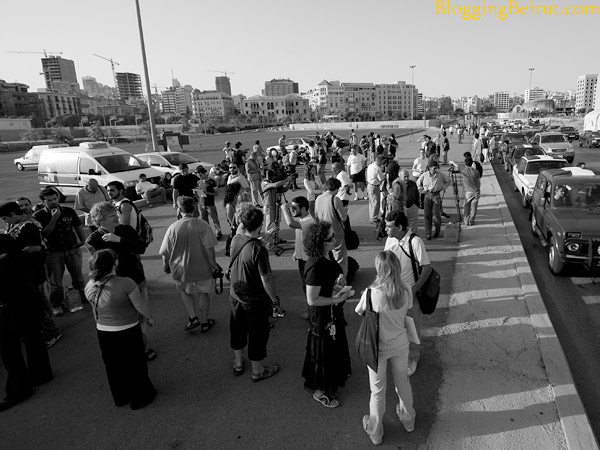
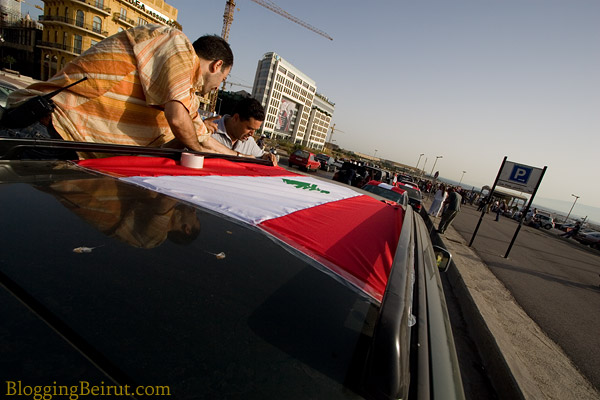

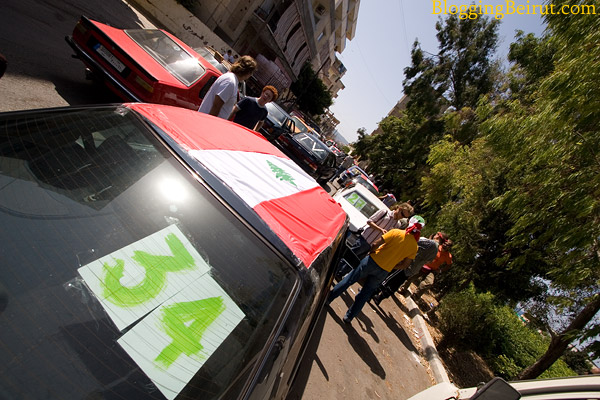

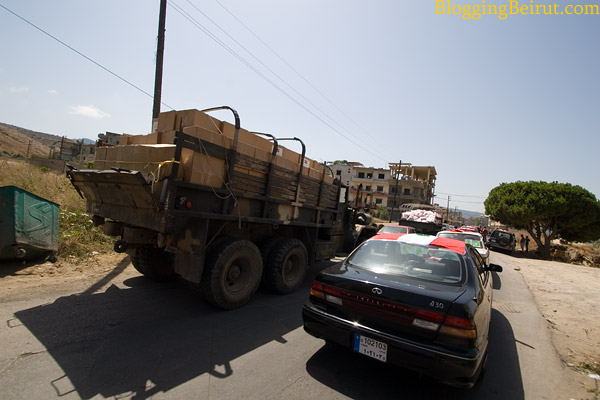
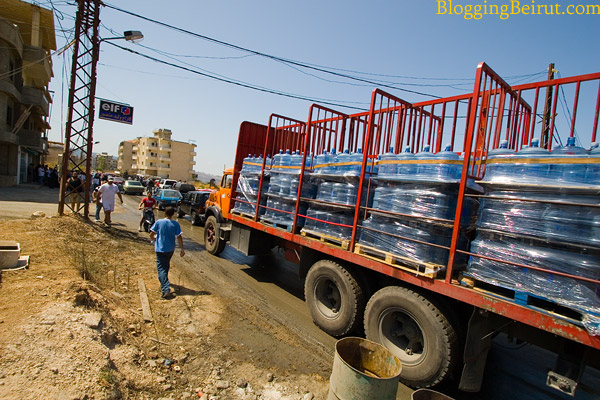
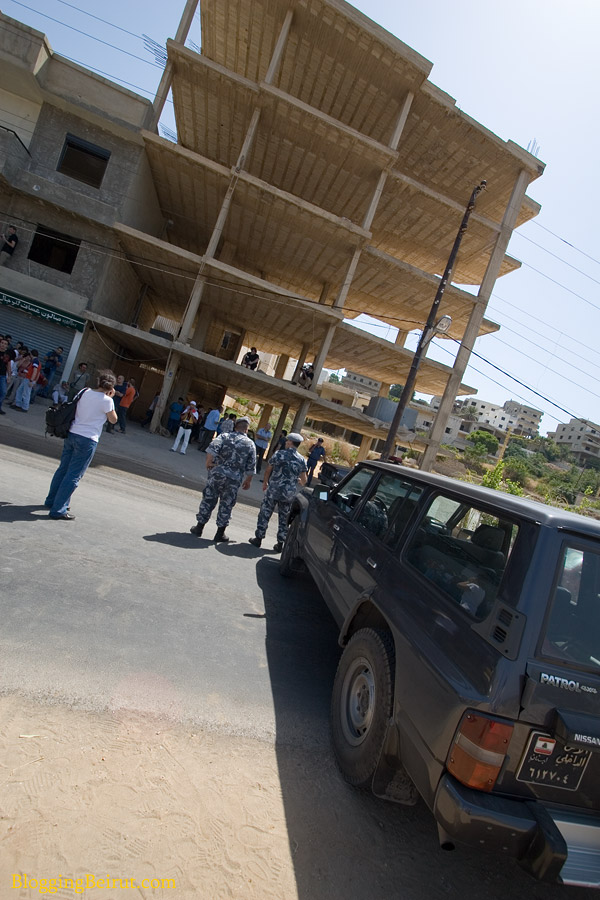
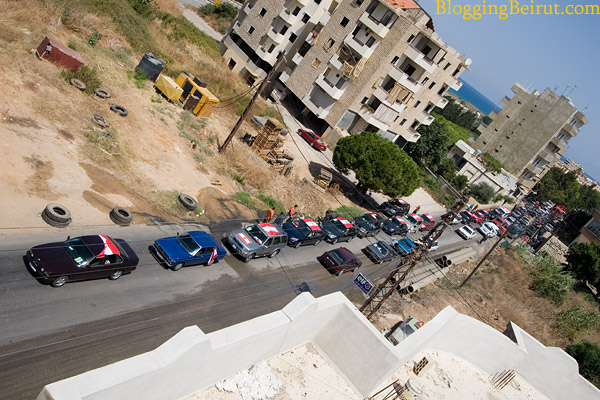
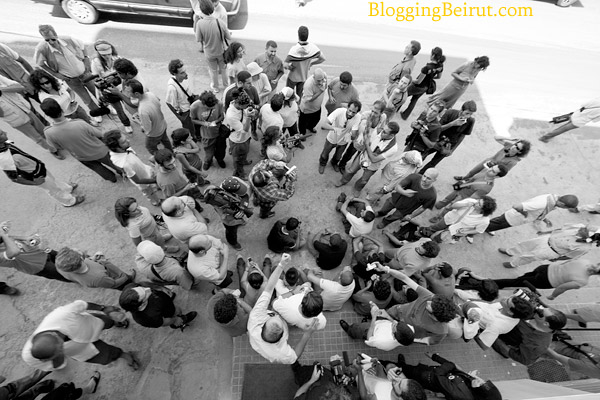
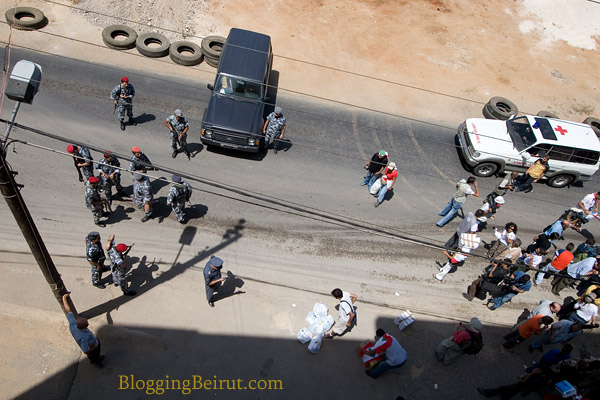
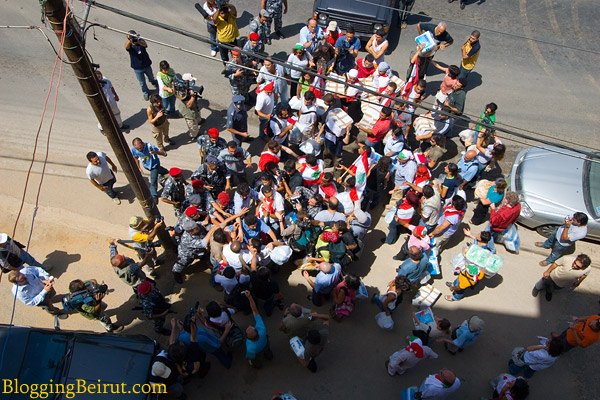 high res
high res
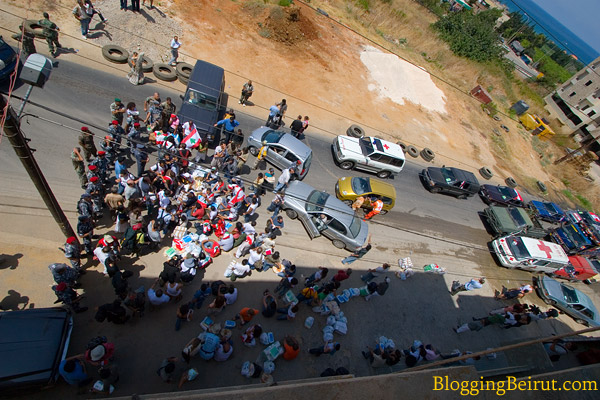
12:26pm: It's over. We're heading solo into Saida. Traffic moving at a good pace.
11:52am: There is a full on confrontation going on with the internal security forces, we are still trying to get through.
11:41am: We have decided to turn back on foot. Carrying the aid on our backs to Beirut. The police are getting irritated. They have called up reserves.
11:30am: Might be a while before we get moving again.
11:11am: It's total chaos. We have essentially blocked the road with our convoy. UN trucks are trying to get through and army aid trucks are coming the other way. Chaos.
10:59am: We are stuck in Haret alNe3meh. The road is blocked by the Lebanese Internal Security Forces. We are trying to get clearance.
10:35am: huge crater, in the highway, had to divert to side roads through villages.
10:30am: A convoy of 50 cars has just left beirut, we have passed the airport. We are now in Doha. Just traversing the first highway diversion where the south bound road is destroyed.
-finkployd with Z- Note: Times are given according to the Lebanese time zone (which is 7 hrs ahead of Eastern Standard Time).
Red line below shows progress. Lebanese map obtained from Mideastweb.org.
 For details about the Action.
under construction
For details about the Action.
under construction
-finkployd & Jamie & Z- all rights reserved
|
|
|

















